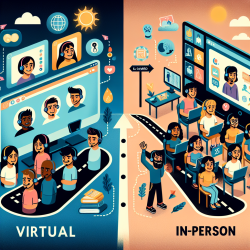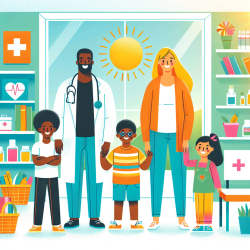The COVID-19 pandemic forced many educational programs to pivot from in-person to virtual formats. This shift provided a unique opportunity to study the effectiveness of these two delivery methods. A recent study titled "Comparing Virtual and In-Person Implementation of a School-Based Sexual Health Promotion Program in High Schools with Large Latino Populations" offers valuable insights into how these formats compare, particularly for programs aimed at Latino youth.
The Study Overview
The research focused on the El Camino program, a sexual health curriculum designed for high school students, predominantly those who are Hispanic or Latino. The study evaluated three cohorts: one virtual and two in-person, using mixed methods including surveys, observations, and facilitator debriefs to assess program effectiveness.
Key Findings
- Attendance: In-person sessions had higher attendance rates compared to virtual ones. This was especially true in schools where the program had an established presence prior to the pandemic.
- Engagement: Both virtual and in-person implementations received high ratings for quality and student engagement. However, engagement looked different across modalities; virtual sessions required more creative strategies to maintain student interest.
- Quality Ratings: Despite lower attendance in virtual settings, both formats were rated highly by students and observers, indicating that quality was maintained across both modalities.
Implications for Practitioners
This study highlights several important considerations for practitioners:
- Adaptation Strategies: Effective virtual programs require thoughtful adaptation of materials and activities to maintain engagement. This includes using interactive tools and ensuring facilitators are trained to manage both content delivery and technical aspects.
- Building Relationships: Establishing strong relationships with schools and students is crucial for success. Programs with pre-existing relationships saw higher attendance and engagement.
- Diverse Engagement Methods: Offering multiple ways for students to engage can help maintain interest and participation, whether through chat features in virtual settings or interactive activities in person.
The Road Ahead
The findings suggest that while challenges exist in both virtual and in-person settings, quality educational outcomes are achievable with careful planning and execution. Practitioners should consider these insights when designing or adapting programs for diverse populations.
If you're interested in further exploring this topic or implementing similar strategies in your practice, I encourage you to read the full research paper: "Comparing Virtual and In-Person Implementation of a School-Based Sexual Health Promotion Program in High Schools with Large Latino Populations".










